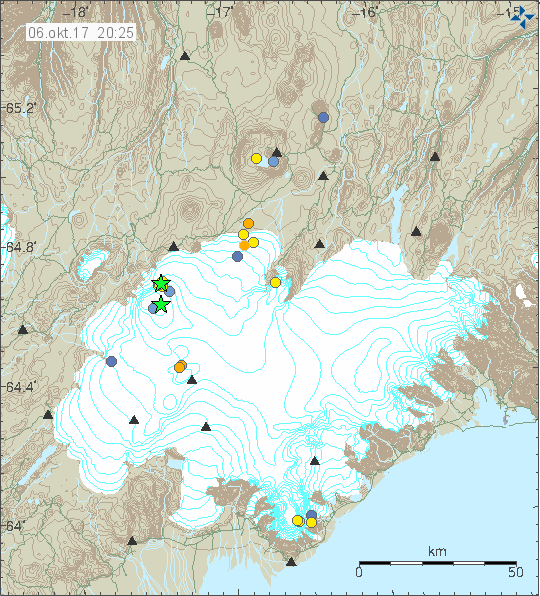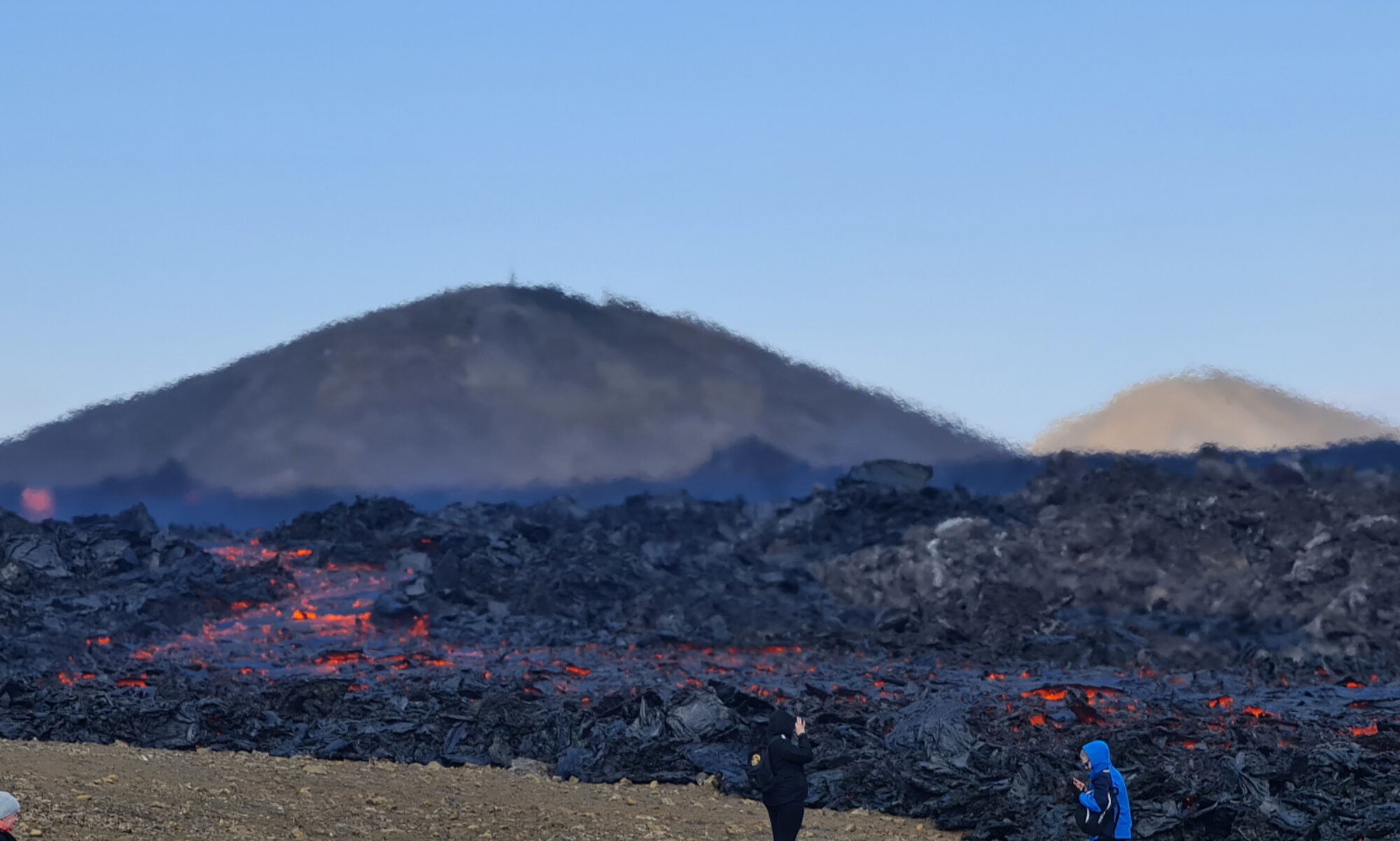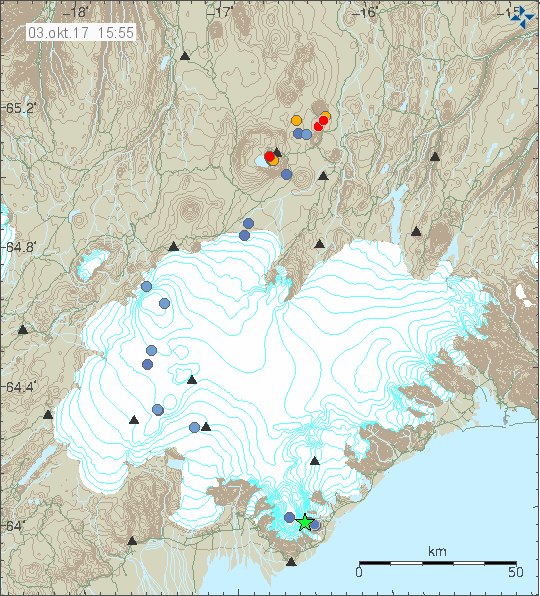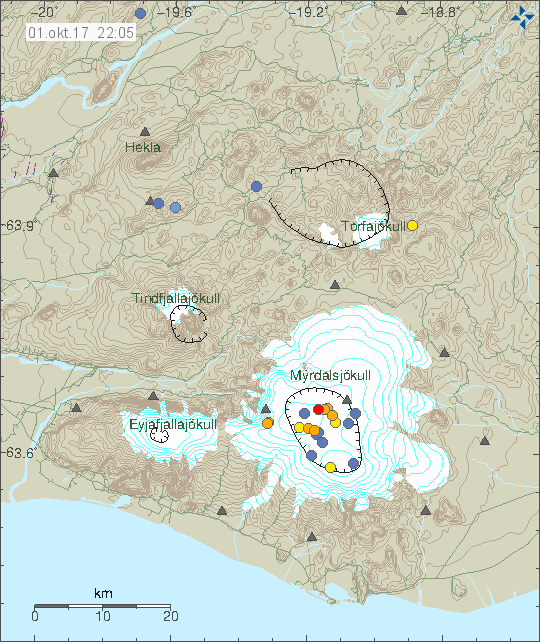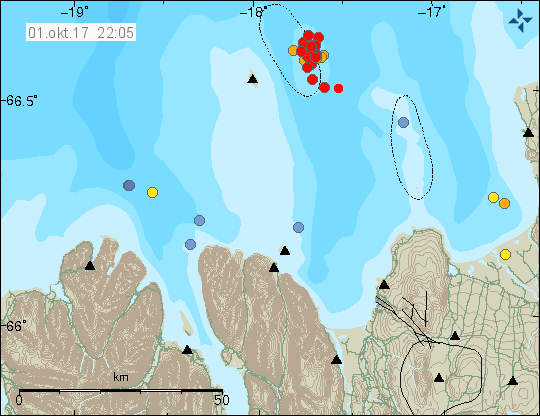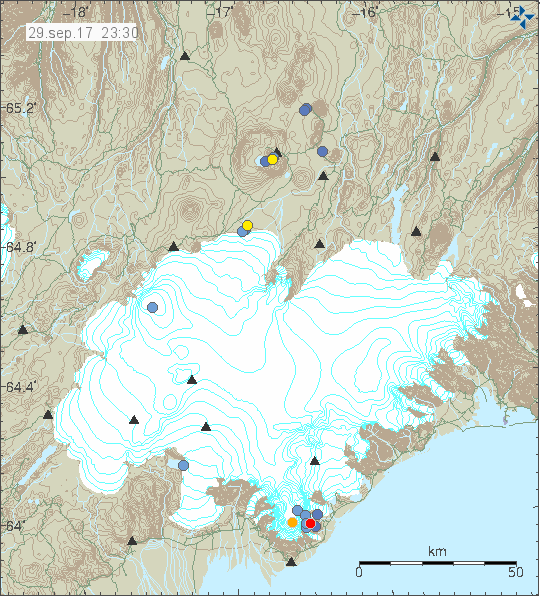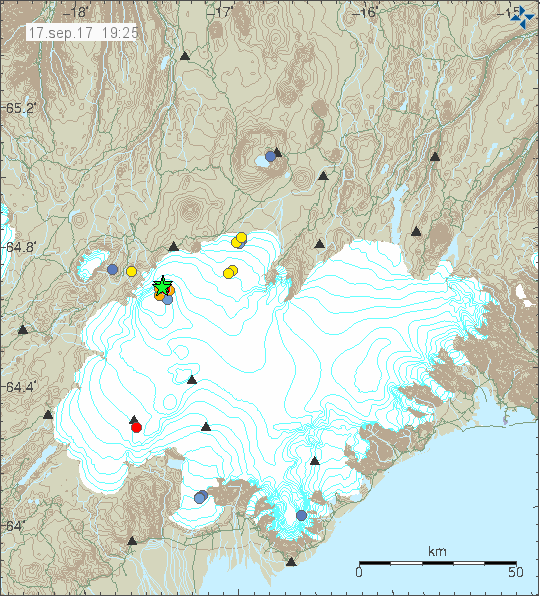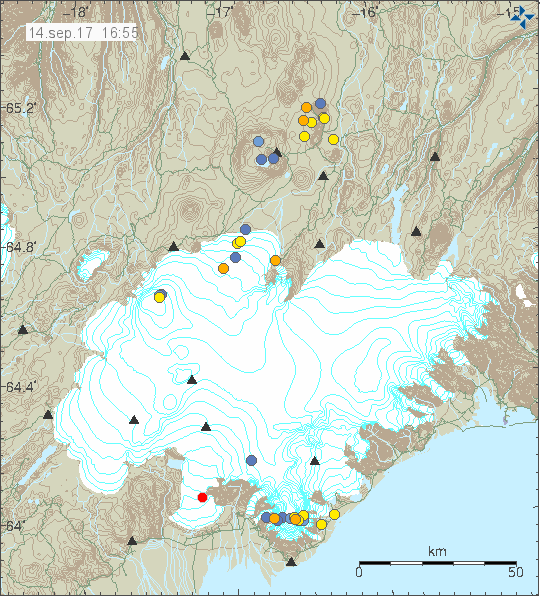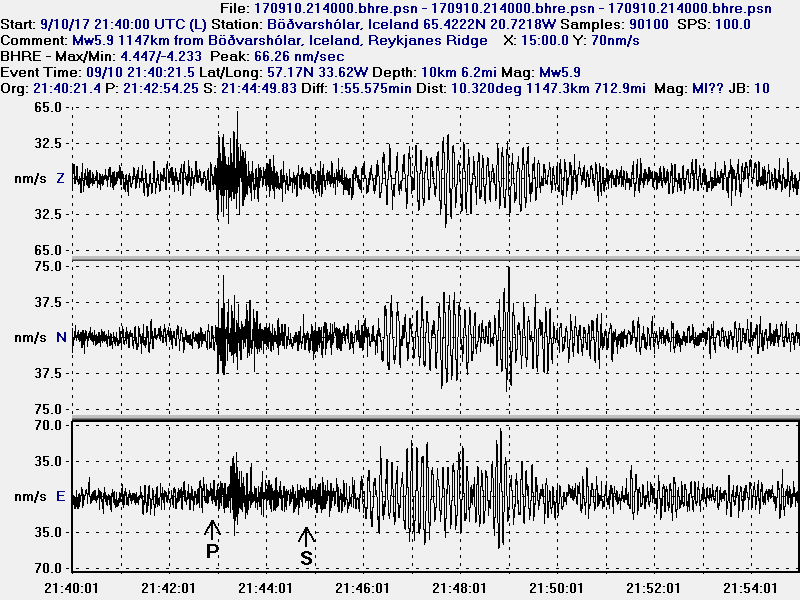Since this volcanoes are in the same part of Iceland I am going to write about them in the same article.
Öræfajökull volcano
I don’t think this was a glacier earthquake activity happening in Öræfajökull volcano. I don’t know how many earthquakes took place this time around. Largest earthquakes had magnitude of 2,0 and 1,8 all other earthquakes where smaller in magnitude. Currently there is no GPS monitoring for Öræfajökull volcano that I know of.
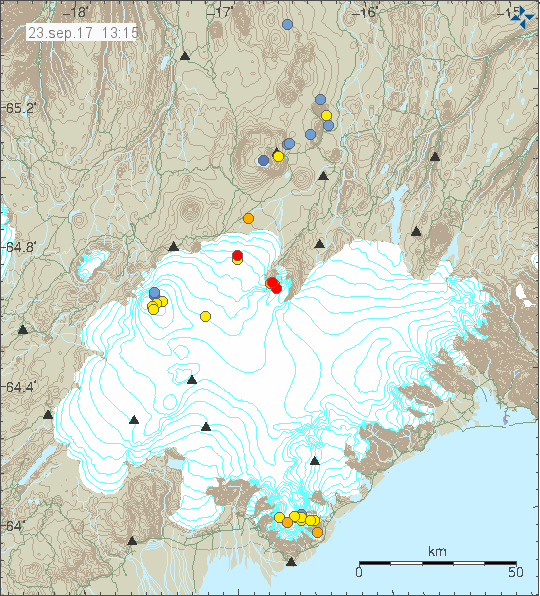
The earthquake activity in Öræfajökull volcano and Kverlfjöll volcano. Copyright of this image belongs to Icelandic Met Office.
It is noticing how this time the earthquake swarm is all on the east side of the volcano. This earthquake activity is interesting and this also seems to signal an increase in earthquake activity in Öræfajökull volcano at least for the time being. It remains a question if this activity slows down again. Earthquake activity in this part of Iceland only happens due stress changes in Öræfajökull volcano. This is most likely influx of magma into Öræfajökull volcano but it might not erupt right away or at all (at least for a long time).
Kverkfjöll volcano
A minor earthquake swarm took place in Kverkfjöll volcano today (23-September-2017). Largest earthquake in this swarm had the magnitude of 2,1 and the second strongest earthquake had a magnitude of 1,4. The earthquake swarm was in the central part of the volcano. This is the first earthquake swarm since 2015 in Kverkfjöll volcano and the activity that year was mostly due the activity happening in Bárðarbunga volcano next to it (the dike from Bárðarbunga volcano did disturb Kverkfjöll volcano). Since this earthquake activity took place everything has been quiet in Kverkfjöll volcano.
Donations
Please remember to support my work. At the moment my fridge is getting close to be empty and it is the first time since I moved to Denmark that happens. I hope that next month (October) is slightly better. Thanks for the support. 🙂
